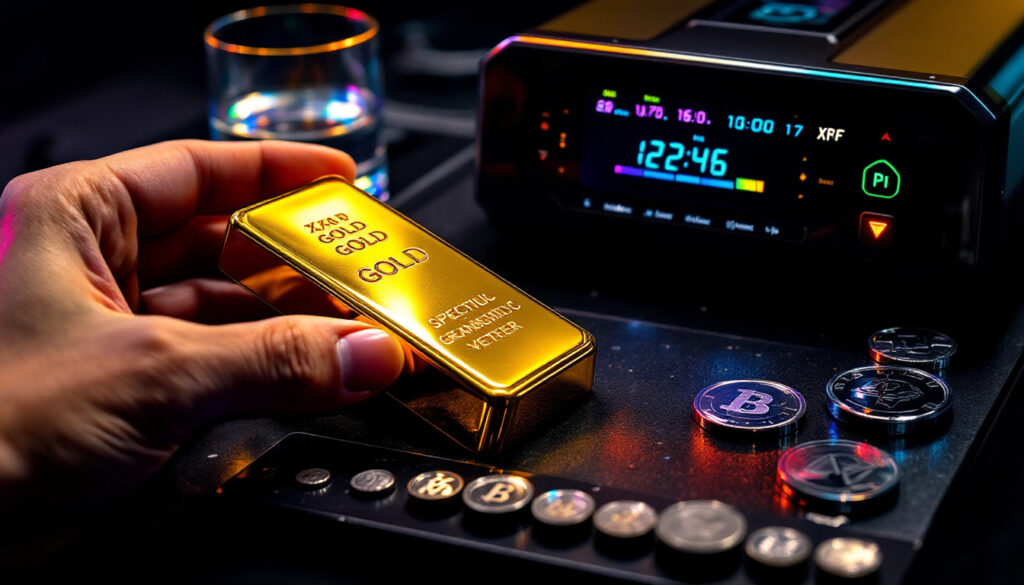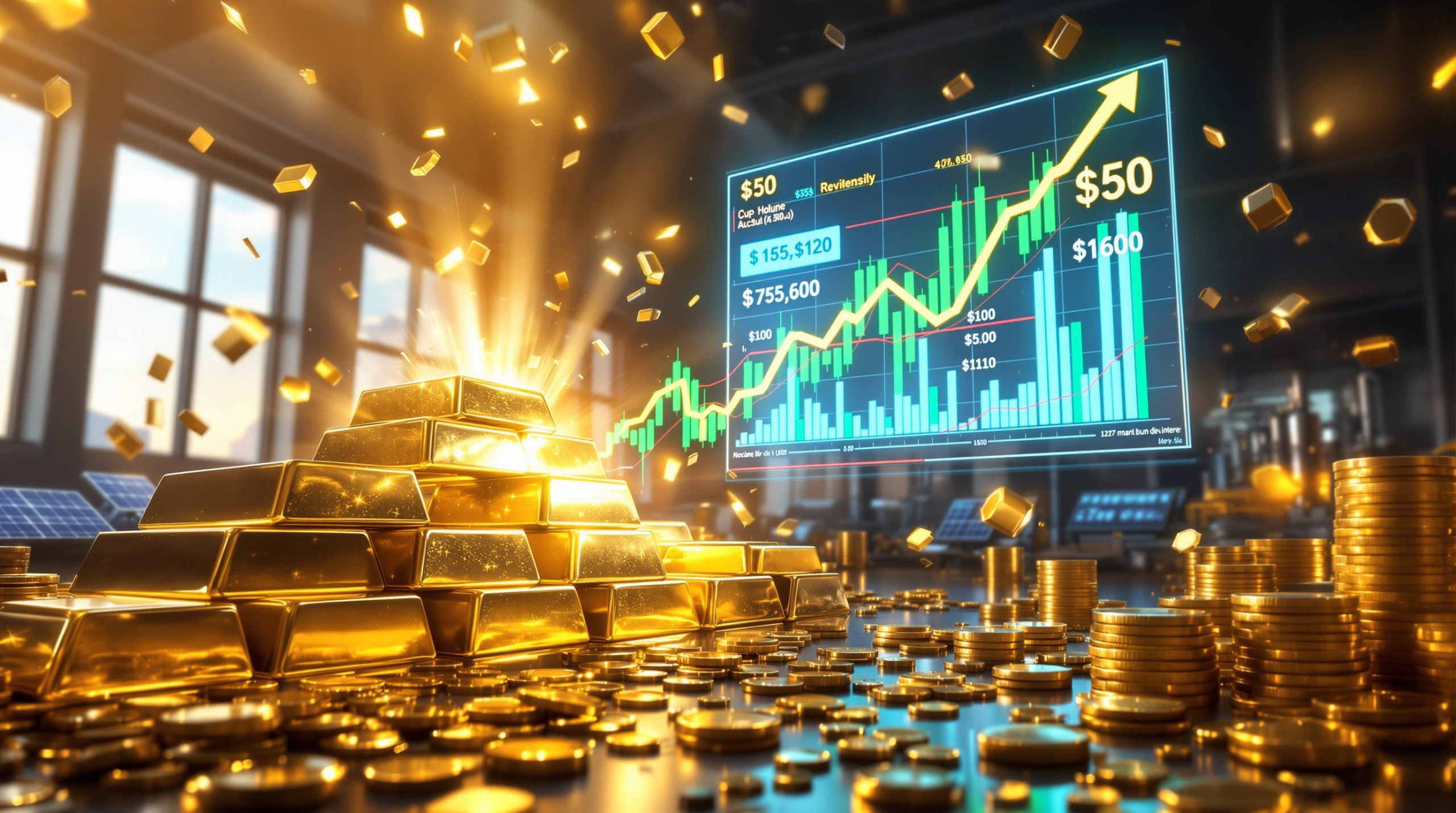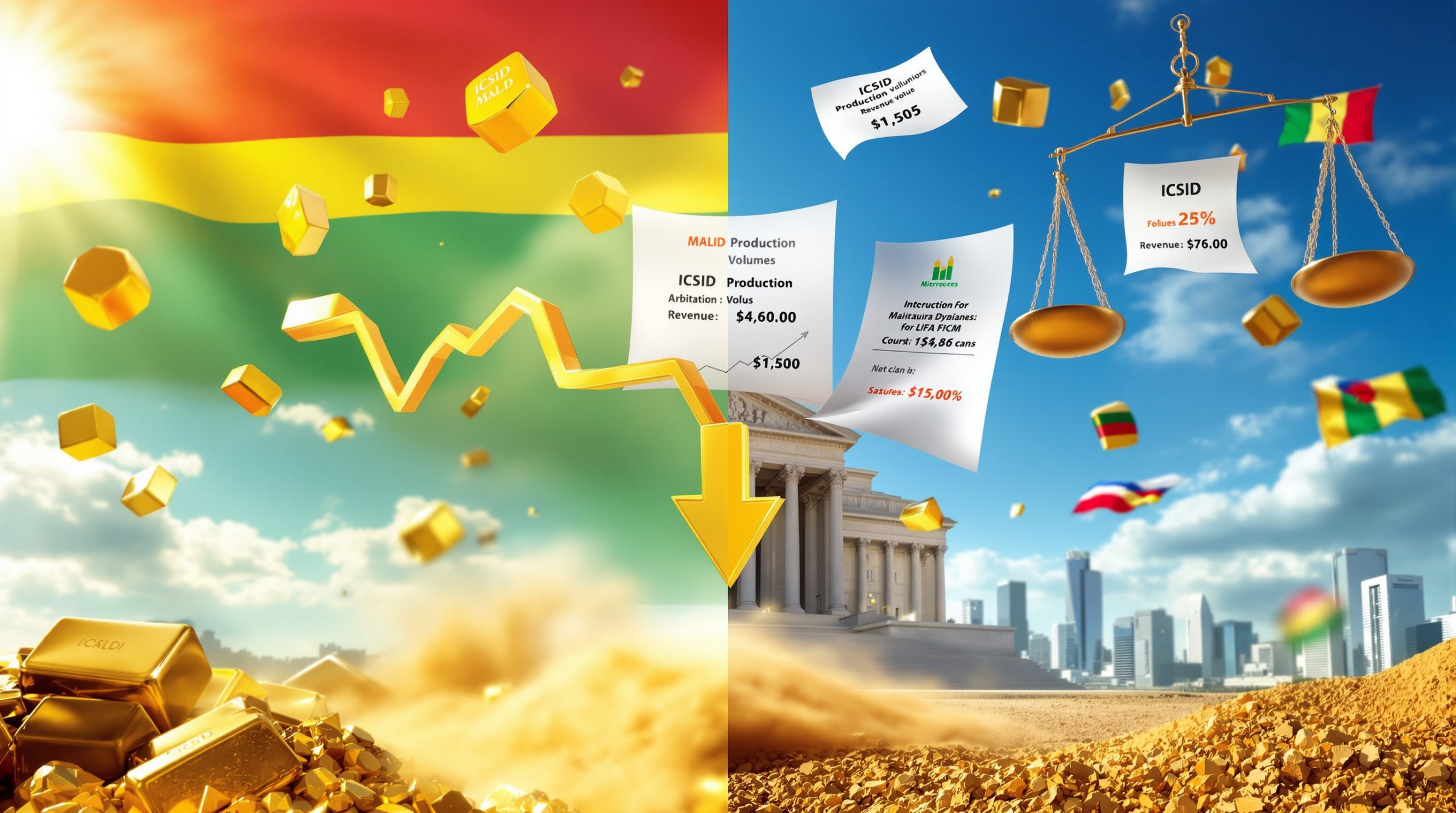Why Is Counterfeiting in Precious Metals Becoming More Alarming?
The Growing Scale of the Precious Metals Counterfeiting Problem
The global precious metals market is facing an unprecedented threat from sophisticated counterfeiting operations. According to the OECD's 2023 Counterfeiting Trade Report, approximately 3.3% of worldwide trade now involves counterfeit goods, with projections indicating this figure could reach an alarming 5% by 2030. This means that within a few years, one in every 20 consumer dollars will be diverted to fake products.
Counterfeiting in precious metals has emerged as perhaps the most lucrative illicit trade globally, generating nearly $1 trillion annually – a figure that surpasses the combined revenues from drug trafficking, human trafficking, and illegal mining operations. The precious metals sector has become a primary target for these criminal enterprises.
In a particularly alarming case from 2019, authorities discovered over 1,000 counterfeit gold bars worth more than $50 million in secured vaults worldwide according to Interpol's "Operation Yellowhammer" report. These sophisticated fakes had passed through multiple checkpoints and verification processes, revealing critical vulnerabilities in the global supply chain.
As one industry expert noted, "Counterfeiting is now the world's most lucrative form of illicit trade, posing systemic risks to legitimate supply chains and undermining consumer confidence in precious metals markets."
Economic Factors Driving the Increase in Precious Metals Fraud
Multiple economic factors have converged to create perfect conditions for counterfeiters. Record gold prices have reached unprecedented heights, breaking all-time records more than 20 times in the past year alone. Similarly, silver prices have experienced significant increases, making accumulation more difficult for traditional investors.
Economic uncertainty, inflation concerns, and geopolitical tensions continue pushing consumers toward tangible assets as wealth preservation vehicles. This trend is evidenced by the surprising emergence of mainstream retailers entering the precious metals market – Costco reported over $100 million in gold bar sales in Q1 2024 alone, according to Bloomberg.
The economics of counterfeiting have become increasingly favorable for criminal enterprises. Higher precious metal values create larger profit margins for fake products, while advanced manufacturing technologies have simultaneously reduced production costs. This combination has made counterfeiting operations more economically viable than ever before.
The European Union Intellectual Property Office (EUIPO) reports that 7.4% of EU imports are now counterfeit, with precious metals representing a growing segment of these illicit goods. This infiltration undermines legitimate markets and erodes consumer confidence in a sector traditionally built on trust.
What Makes Modern Precious Metal Counterfeits So Dangerous?
Advanced Counterfeiting Techniques in Today's Market
Today's counterfeit precious metals bear little resemblance to the crude fakes of previous decades. Modern counterfeiting operations employ sophisticated methods that challenge even experienced professionals:
-
Base metal plating and alloy manipulation: Counterfeiters now use precise electroplating techniques to apply microscopically thin layers of gold or silver over base metals, creating products virtually indistinguishable from genuine items to the naked eye.
-
Dense metal cores: By using tungsten or other dense metals as cores, counterfeiters can maintain the expected weight and feel of precious metals while minimizing the actual gold or silver content. These "weighted" counterfeits often pass basic handling tests.
-
3D printing technology: According to the Journal of Forensic Sciences, counterfeiters now utilize high-resolution 3D printing to create dimensionally perfect molds capable of replicating even the most intricate design elements and mintmarks.
-
Security feature duplication: Modern fakes often include sophisticated reproductions of security features, including microprinting, holographic elements, and specialized finishes that were once considered tamper-proof.
-
Forged documentation: Europol reports that generative AI in mining innovations is now being used to create convincing certificates of authenticity (COAs) and assay documentation that appear legitimate upon initial inspection.
The synergy between these techniques creates counterfeits that can defeat multiple authentication methods simultaneously, requiring increasingly sophisticated detection approaches.
Beyond Bullion: The Expanding Scope of Precious Metal Fraud
Counterfeiting has expanded well beyond traditional bullion markets into numerous sectors where precious metals play critical roles:
"The proliferation of counterfeit precious metals in medical devices represents an emerging public health concern, with potential clinical implications that extend far beyond simple financial losses." – European Medical Agency
Particularly concerning is the appearance of counterfeit precious metals in medical devices like dental implants and surgical components. The European Medical Agency reported in 2020 that nickel-based dental implants fraudulently sold as gold or platinum alloys caused a 12% allergic reaction rate in affected patients.
The jewelry sector has been heavily targeted as well. In March 2024, U.S. Customs and Border Protection announced a $3.5 million seizure of counterfeit designer jewelry in Puerto Rico containing negligible precious metal content despite being stamped and sold as solid gold.
Equally troubling is the rising market for fraudulent antique or rare gold items. The Honolulu Star-Advertiser reported a major arrest in February 2024 involving individuals selling fake "ancient" gold coins in public markets, targeting both tourists and collectors with elaborate historical narratives.
These counterfeits have infiltrated both formal distribution chains and informal dealer networks, creating widespread uncertainty for consumers and legitimate businesses alike.
How Do Counterfeit Precious Metals Impact the Market and Society?
Financial Consequences for Investors and Collectors
The financial implications of precious metals counterfeiting extend from individual losses to market-wide effects:
-
Direct financial losses: Individual investors have reported losses ranging from thousands to hundreds of thousands of dollars after unknowingly purchasing counterfeit products that passed initial inspection.
-
Limited recovery options: According to the FTC Consumer Sentinel Report, approximately 80% of victims lose their funds irreversibly, with limited legal recourse once transactions are completed, particularly in private sales.
-
Market-level price distortion: The LBMA Market Report indicates that the injection of fake bullion into the market artificially inflates supply, reducing premiums on genuine products by an estimated 8-15%.
-
Eroded buyer confidence: As counterfeiting incidents receive public attention, buyer hesitation increases, with legitimate dealers reporting declining sales following major counterfeit discoveries.
-
Authentication cost burden: Investors increasingly must bear the expense of third-party authentication, adding cost layers that reduce potential returns.
These financial impacts disproportionately affect retail investors and smaller collectors who may lack the resources for advanced testing or the ability to absorb significant losses.
Broader Criminal Connections and Environmental Impact
The production and distribution of counterfeit precious metals form part of a broader criminal ecosystem:
Counterfeit operations frequently maintain direct links to illegal mining activities, especially in biodiverse regions like the Amazon Basin. Global Witness reports that approximately 30% of Amazon gold mining is conducted illegally, causing devastation to local ecosystems through mercury contamination and deforestation.
According to the United Nations Office on Drugs and Crime (UNODC), counterfeit precious metals operations fund approximately 40% of transnational crime networks in Latin America, creating self-sustaining criminal ecosystems that undermine regional stability.
The proceeds from counterfeit precious metals readily flow into other criminal enterprises, including drug trafficking and money laundering operations. Tanzania's 2022 crackdown on gold-linked drug trafficking revealed extensive connections between counterfeit gold operations and international narcotics distribution networks.
Beyond criminal connections, the environmental concerns are substantial. Unregulated extraction methods associated with counterfeit supply chains cause widespread mercury contamination, deforestation, and habitat destruction that legitimate operations are increasingly required to avoid through regulatory compliance.
What Methods Can Detect Counterfeit Precious Metals?
Visual Inspection and Basic Testing Techniques
While professional equipment offers the highest reliability, several accessible methods can help identify potential counterfeits:
-
Security feature examination: Legitimate mints incorporate sophisticated security elements including shifting images, lenticular effects, and micro-engraving that can be verified with magnification.
-
Barcode verification systems: Many major manufacturers now include unique QR codes or barcodes that can be verified through official websites to confirm authenticity.
-
Specific gravity testing: According to the Numismatic Guaranty Company, specific gravity testing is 99% accurate for detecting silver counterfeits when properly conducted, measuring the ratio of an object's weight to the weight of an equal volume of water.
-
Acid testing: While potentially damaging to the metal surface, acid testing remains a reliable method for detecting base metal substitutions, using calibrated solutions that react differently with precious versus non-precious metals.
-
Magnetic testing: Simple neodymium magnets can detect ferromagnetic metals often used in counterfeits, though some sophisticated fakes use non-magnetic tungsten cores to defeat this test.
For collectors without specialized equipment, combining multiple basic tests significantly improves detection rates compared to relying on any single method.
Advanced Technology for Authentication
For definitive authentication, several technologies offer near-certainty:
Precious Metals Verifier devices use electromagnetic conductivity to detect compositional anomalies throughout a coin or bar, not just at the surface. While expensive (typically $700-1,200), these devices can detect sophisticated tungsten-core counterfeits that pass most other tests.
X-ray fluorescence (XRF) testing provides detailed elemental analysis but has limitations with surface coatings. According to Thermo Fisher Scientific, XRF only penetrates approximately 0.1mm into the metal surface, potentially missing internal composition issues.
Inductively coupled plasma spectrometry (ICP) represents the gold standard for laboratory analysis, requiring a small sample but providing definitive compositional information accurate to parts per million.
For more accessible verification, the open-source Cyber Current Twitcher "Silver Slide" design (available on GitHub) uses magnetic properties to identify suspicious items. Similarly, the Pocket Pinger ($30) analyzes the acoustic signature of struck coins, detecting approximately 90% of fake silver according to independent testing by the Silver Stackers Forum.
Emerging ultrasound testing methods, as documented in the Journal of Materials Science, offer promising non-destructive alternatives that can identify internal structures without damaging valuable items.
How Can Investors Protect Themselves from Precious Metals Fraud?
Best Practices for Safe Purchasing
Implementing these protective strategies significantly reduces counterfeiting risk:
-
Purchase exclusively through established channels: The Professional Numismatists Guild advises that buying from PNG-certified dealers reduces fraud risk by approximately 95% compared to unverified sources.
-
Verify authentication documentation: Always request and independently verify certificates of authenticity through issuing organizations rather than accepting documentation at face value.
-
Learn security feature recognition: Familiarize yourself with the specific security features of products you collect, including mintmarks, edge details, and surface characteristics unique to genuine items.
-
Understand physical properties: Genuine precious metals have distinctive weight, color, sound, and other physical characteristics that become recognizable with experience.
-
Maintain healthy skepticism: The Better Business Bureau's Scam Tracker database reveals that most victims report being enticed by prices 15-30% below market value – remember that exceptional deals typically indicate potential fraud.
"The single most important protective measure is buying exclusively from dealers with established reputations and robust verification processes. The additional premium paid to legitimate dealers should be viewed as fraud insurance." – Professional Numismatists Guild
For substantial investments, consider the added security of third-party authentication services, particularly for rare or high-value items where counterfeiting incentives are greatest.
Red Flags That Signal Potential Counterfeits
Be alert to these warning signs that frequently indicate counterfeit products:
-
Pricing substantially below market value: Discounts exceeding 10-15% below prevailing market prices for identical products should trigger immediate caution.
-
Inconsistencies in packaging or documentation: Look for misaligned printing, unusual font choices, or spelling errors in accompanying materials.
-
Unusual physical characteristics: Be suspicious of items with atypical weight, color variation, or sound when tapped (particularly for coins).
-
Seller resistance to verification: Legitimate dealers welcome verification and typically offer return policies; reluctance to allow testing or verification often indicates potential fraud.
-
Generic or copied images in online listings: Professional dealers use unique photographs of actual inventory rather than stock images.
-
Unverified seller credentials: Always check Better Business Bureau ratings and professional affiliations before purchasing.
-
High-pressure sales tactics: Counterfeiters often create artificial urgency to prevent careful inspection or comparison shopping.
When encountering multiple red flags, the prudent approach is to withdraw from the transaction entirely rather than proceeding with hopes of verification after purchase.
What Does the Future of Precious Metals Authentication Look Like?
Emerging Technologies in Anti-Counterfeiting
Several promising technologies are reshaping authentication capabilities:
Blockchain-based tracking and authentication systems create immutable records of a product's journey from production through distribution. The Royal Mint's "Digital Gold Vault" pilot program (2024) assigns each physical gold product a digital twin on a secure blockchain, allowing real-time verification of authenticity and chain of custody.
Advanced holographic security features now incorporate multiple authentication layers, including elements visible only under specific light conditions or magnification levels. These dynamic features prove extremely difficult to replicate accurately.
Quantum dot marking technology, as detailed in MIT Technology Review, applies microscopic semiconductor particles with unique spectral signatures directly to precious metals. These markers remain invisibly embedded but can be instantly verified with specialized readers.
AI-powered verification tools can analyze microscopic manufacturing patterns unique to legitimate mints, identifying counterfeits by detecting deviations from expected production signatures.
Isotope analysis for origin verification examines the specific isotopic composition of metals, which varies by mining region. This technology can confirm whether a product's composition matches its claimed origin, adding another verification layer.
These emerging technologies will likely create a multi-layered authentication ecosystem where several independent verification methods work in concert to establish authenticity.
Industry and Regulatory Responses to Combat Counterfeiting
The precious metals industry is developing coordinated responses to the counterfeiting threat:
The anticipated ISO 12931-2 standard for anti-counterfeiting technologies (expected in 2025) will establish unified guidelines for authentication across the precious metals industry, creating consistent verification benchmarks.
Major mints and refineries have substantially enhanced product security features, including micro-engraved serial numbers, proprietary marking technologies, and customized holographic elements unique to each production facility.
Industry associations like the LBMA (London Bullion Market Association) have implemented more rigorous chain-of-custody requirements for accredited dealers, creating additional barriers for counterfeit products to enter legitimate distribution channels.
Consumer education initiatives from organizations like the American Numismatic Association provide accessible learning resources on counterfeit detection, raising awareness among collectors and investors.
International coordination between law enforcement agencies, including Interpol's dedicated precious metals fraud unit, has increased disruption of counterfeit supply chains through coordinated operations targeting production facilities and distribution networks.
These combined efforts reflect growing recognition that counterfeiting represents an existential threat to market integrity that requires collaborative solutions across public and private sectors.
Frequently Asked Questions About Counterfeit Precious Metals
How Common Are Fake Gold and Silver Products?
Counterfeit prevalence varies significantly by market segment and product type:
The U.S. Mint reports that American Silver Eagles represent approximately 40% of all counterfeited coin seizures, making them the most frequently targeted government-issued bullion coin globally.
Generic silver rounds and bars show lower counterfeit rates (approximately 5-8% of seized items) due to their relatively lower value and wider acceptable variation in appearance and finish.
Numismatic or collector coins with significant premiums above metal value face higher counterfeiting rates, particularly key dates with established collector demand.
Regional variations exist, with developing markets experiencing higher counterfeit rates than established markets with more robust verification infrastructure. Asian markets report counterfeit incidence rates approximately 3-4 times higher than North American markets for identical products.
Recent investigations suggest 2-5% of precious metals in circulation may be counterfeit, though this estimate continues to evolve as detection methods improve.
What Are the Most Reliable Authentication Methods for Home Use?
For individual investors without access to laboratory equipment, these options provide the best balance of cost and effectiveness:
A comprehensive testing strategy combining multiple methods offers the highest reliability. Using specific gravity testing alongside visual inspection and magnetic testing identifies approximately 85-90% of counterfeits.
For collectors focusing on silver products, the Cyber Current Twitcher "Silver Slide" design provides excellent value with low implementation costs while detecting most common silver counterfeits.
For those focusing on the gold market surge, the higher upfront cost of a Precious Metals Verifier is justified by the higher per-ounce value of gold products and the device's superior detection capabilities.
For occasional purchases, utilizing a dealer's verification services before completing transactions may prove more economical than investing in personal equipment.
The appropriate testing regime should scale with collection value – larger investments justify more sophisticated testing equipment and potentially professional verification services.
Can Professional Grading Services Guarantee Authenticity?
Third-party grading services provide significant but not absolute
Want to Stay Ahead of Major Mining Discoveries?
Discover significant ASX mineral finds the moment they're announced with Discovery Alert's proprietary Discovery IQ model, giving you a market-leading advantage for both short-term trading and long-term investment opportunities. Explore historic returns from major discoveries at our dedicated discoveries page and start your 30-day free trial today.




